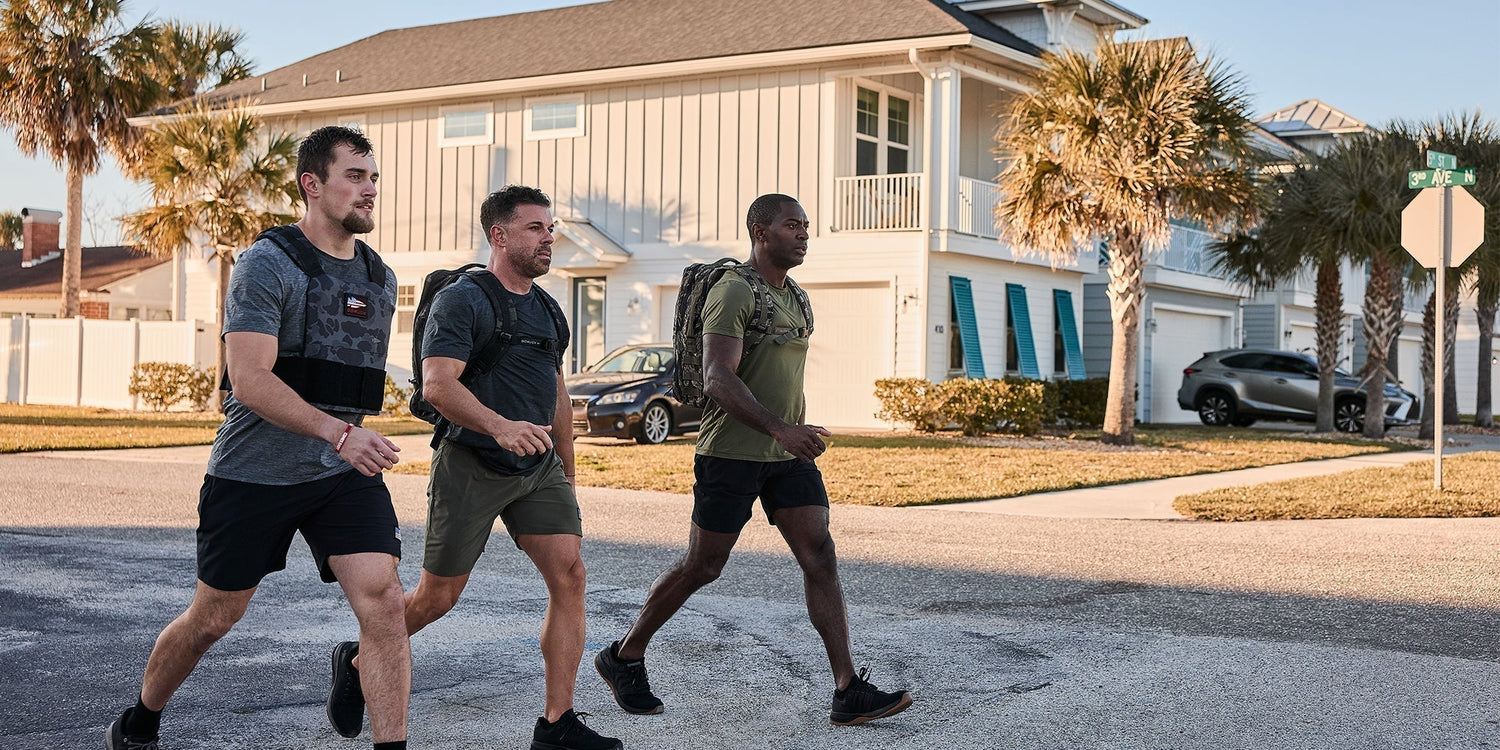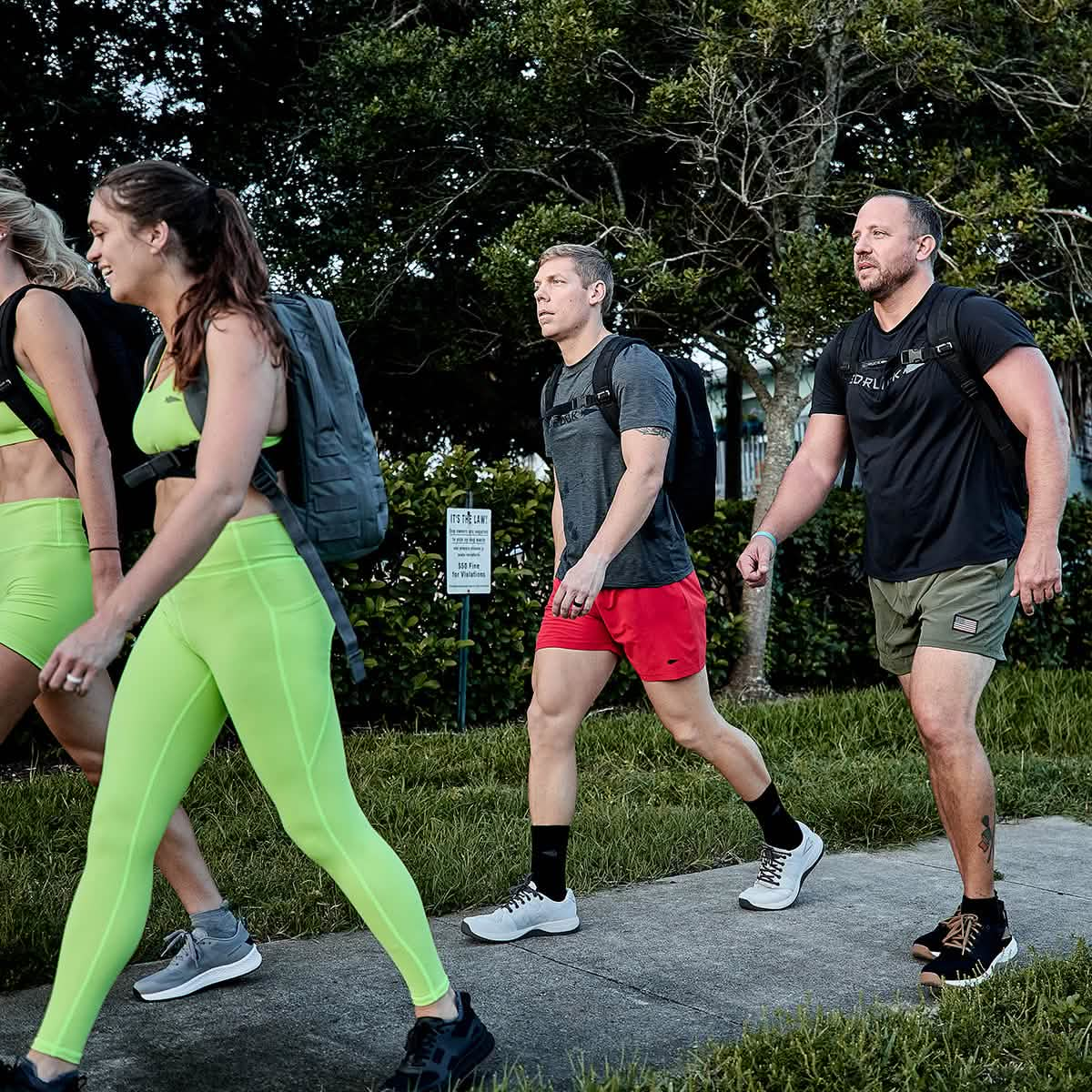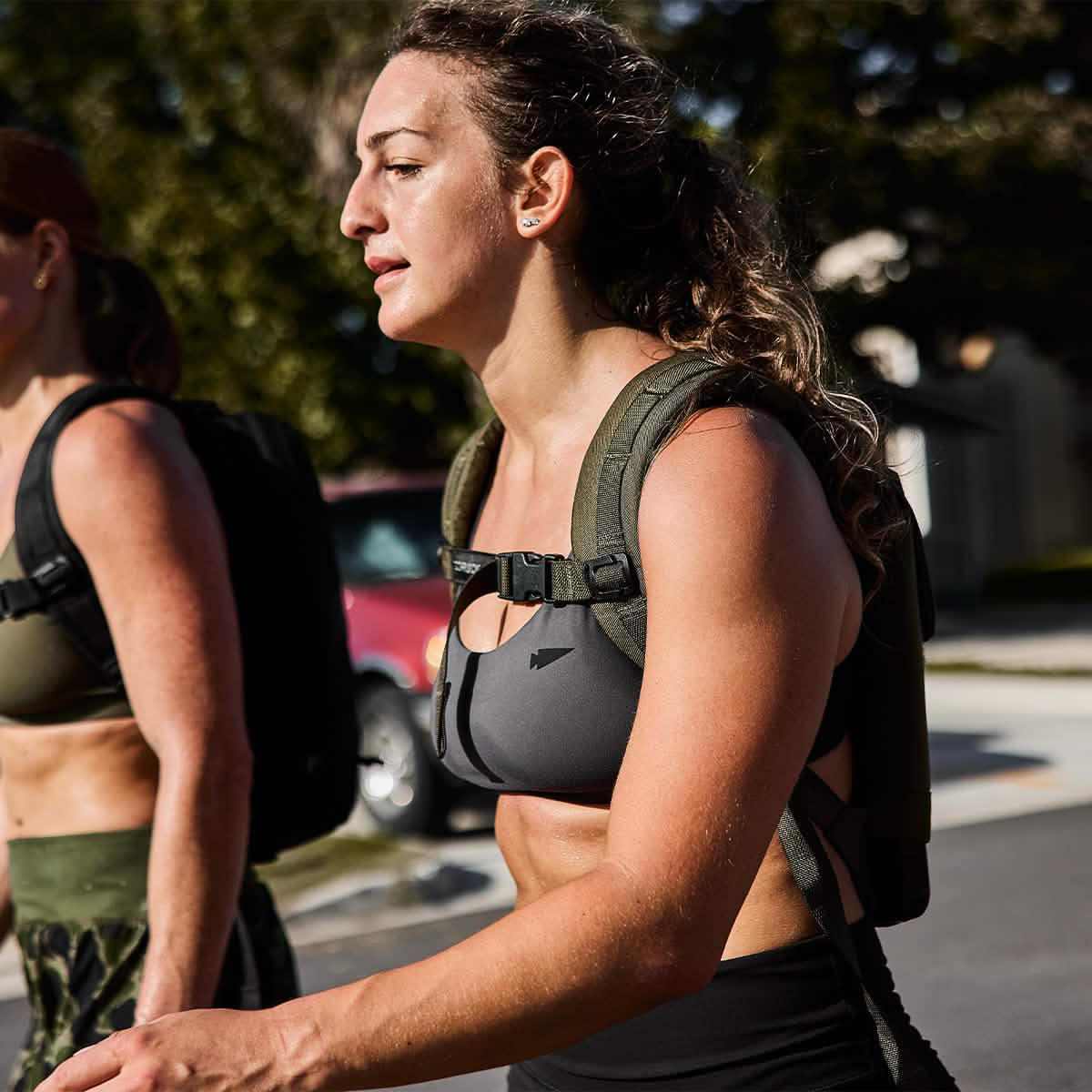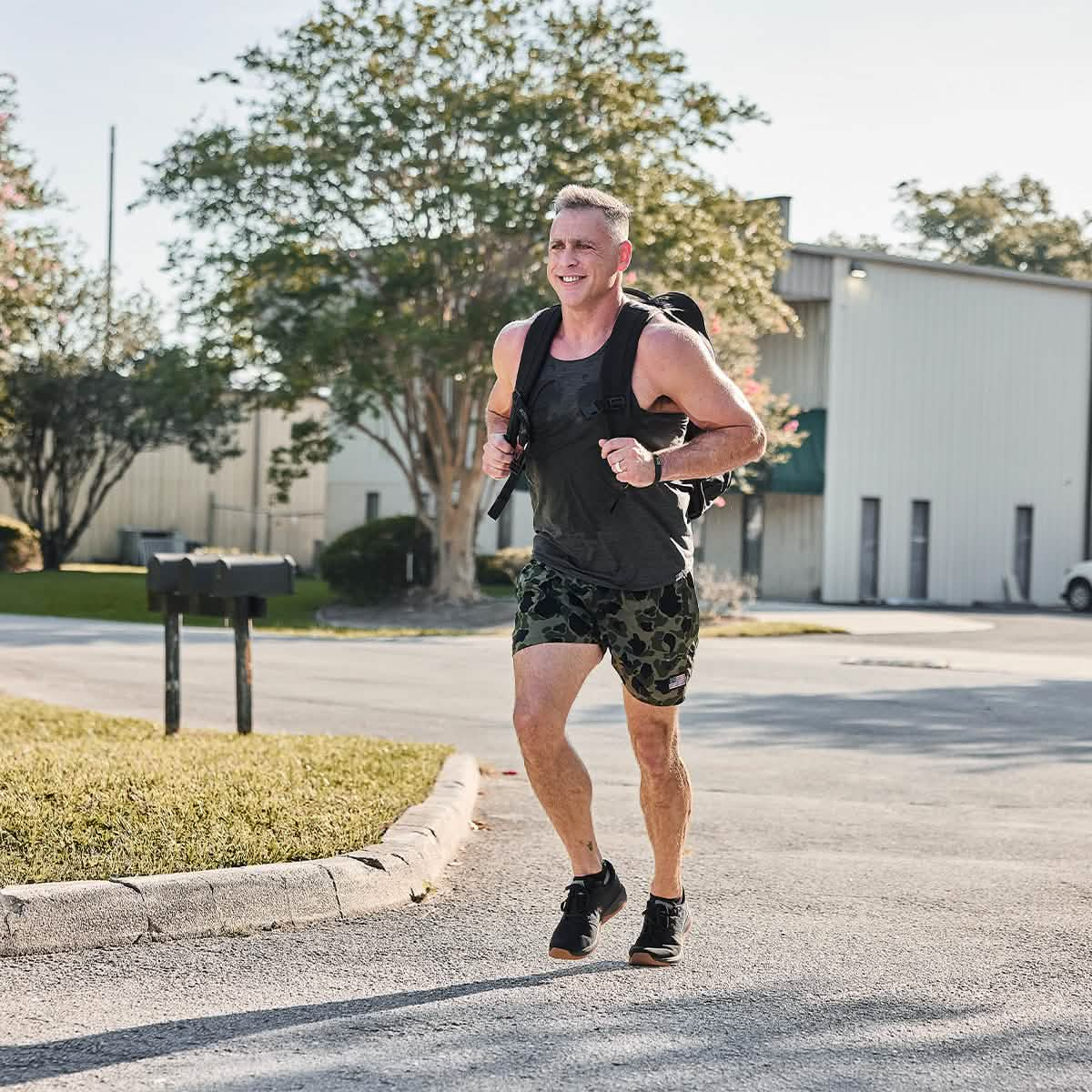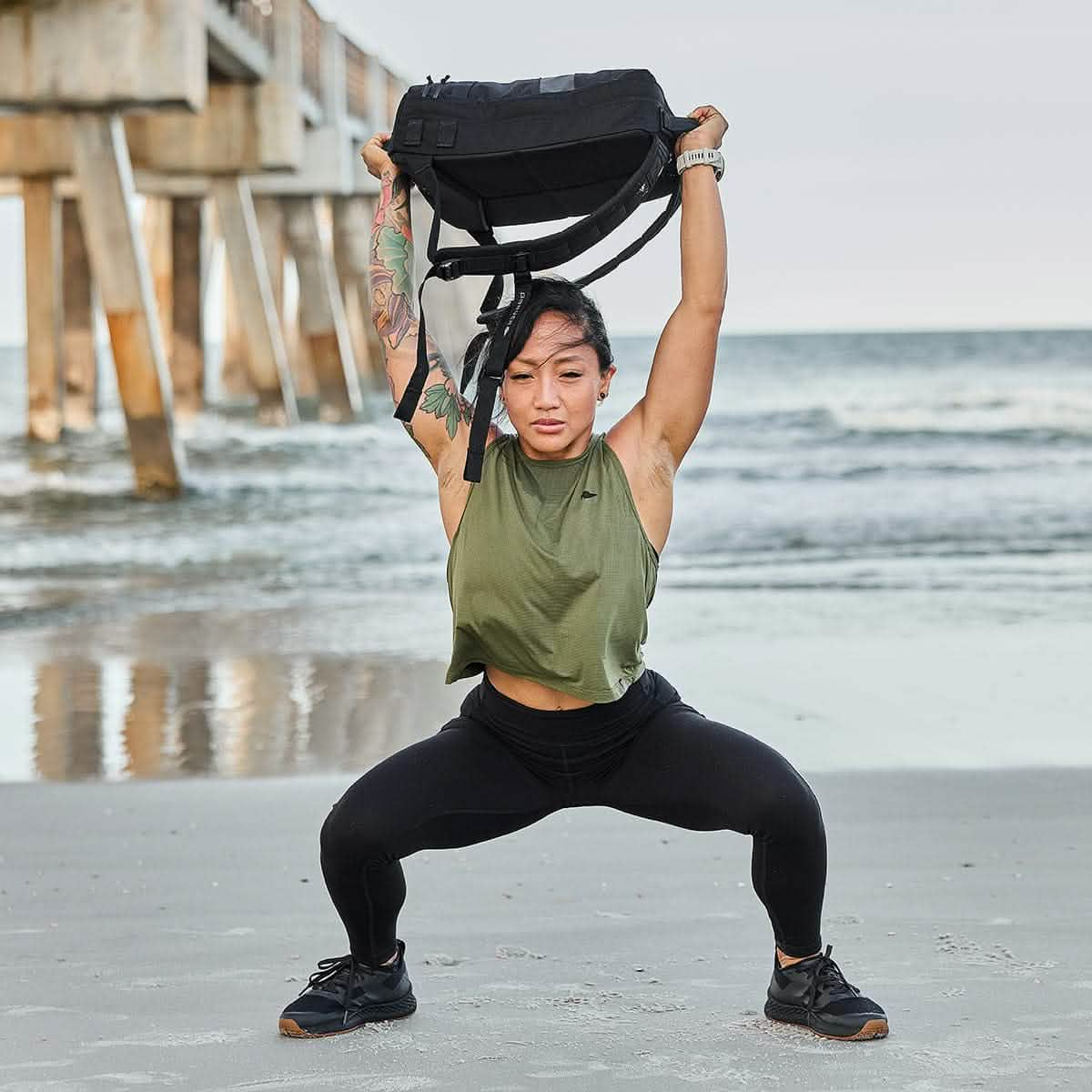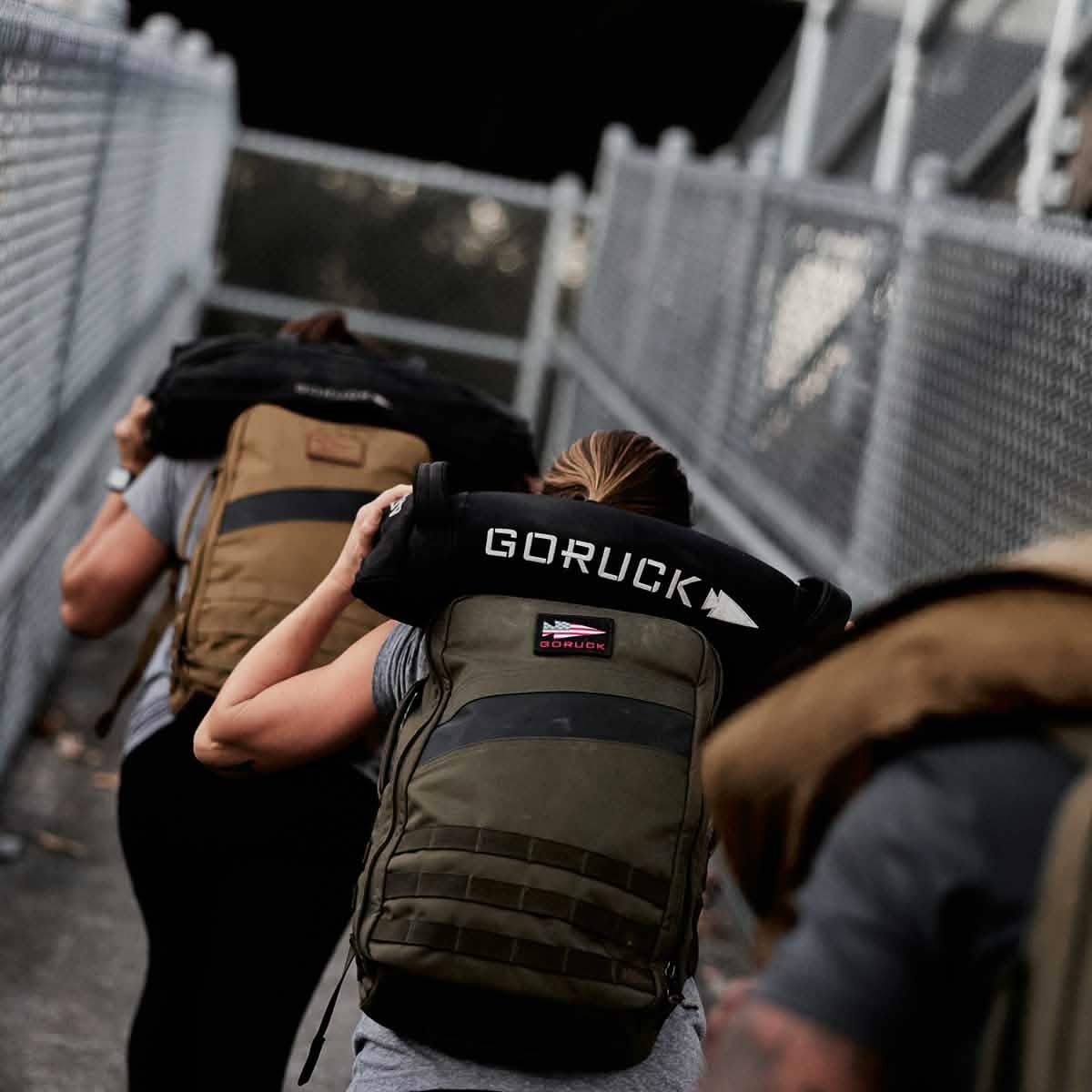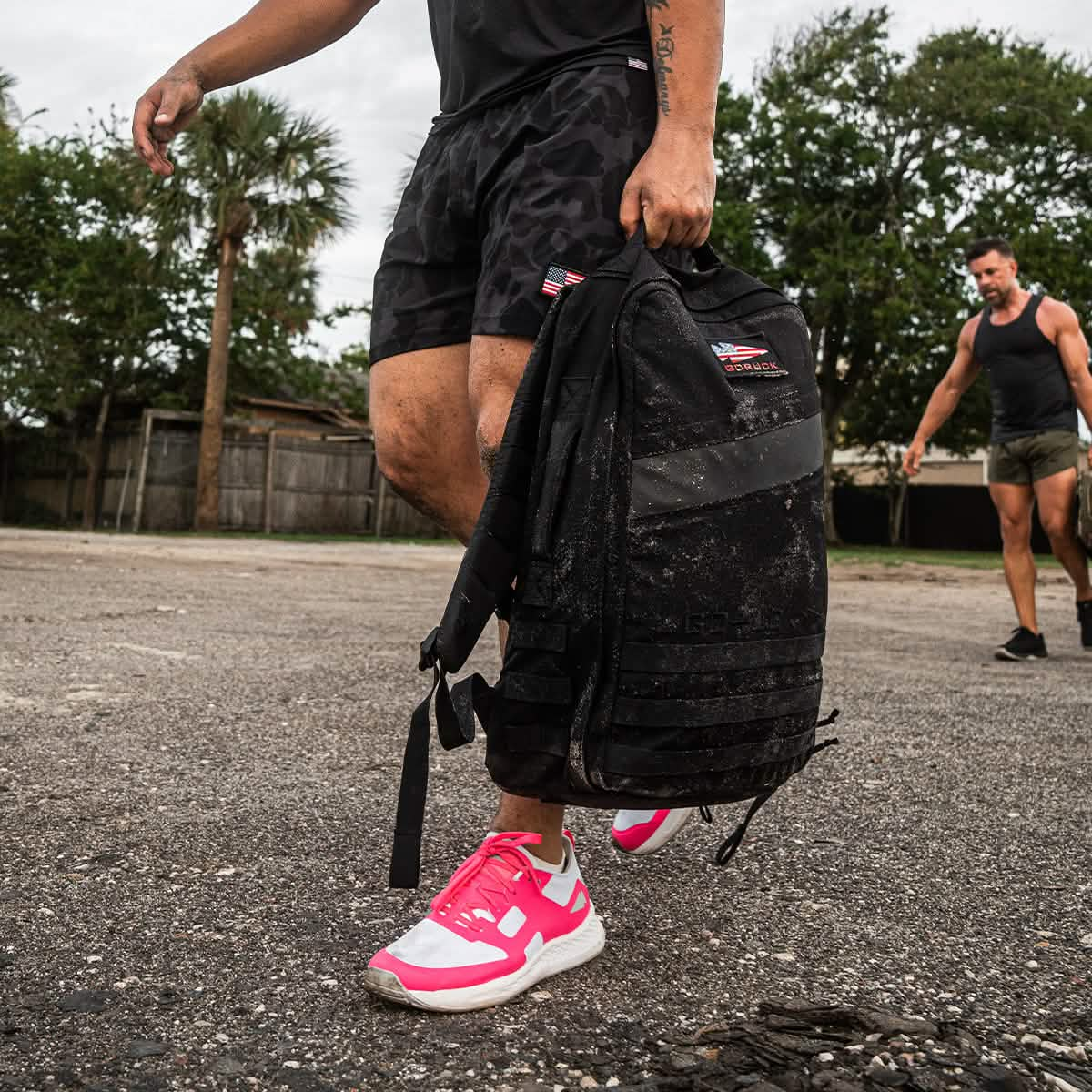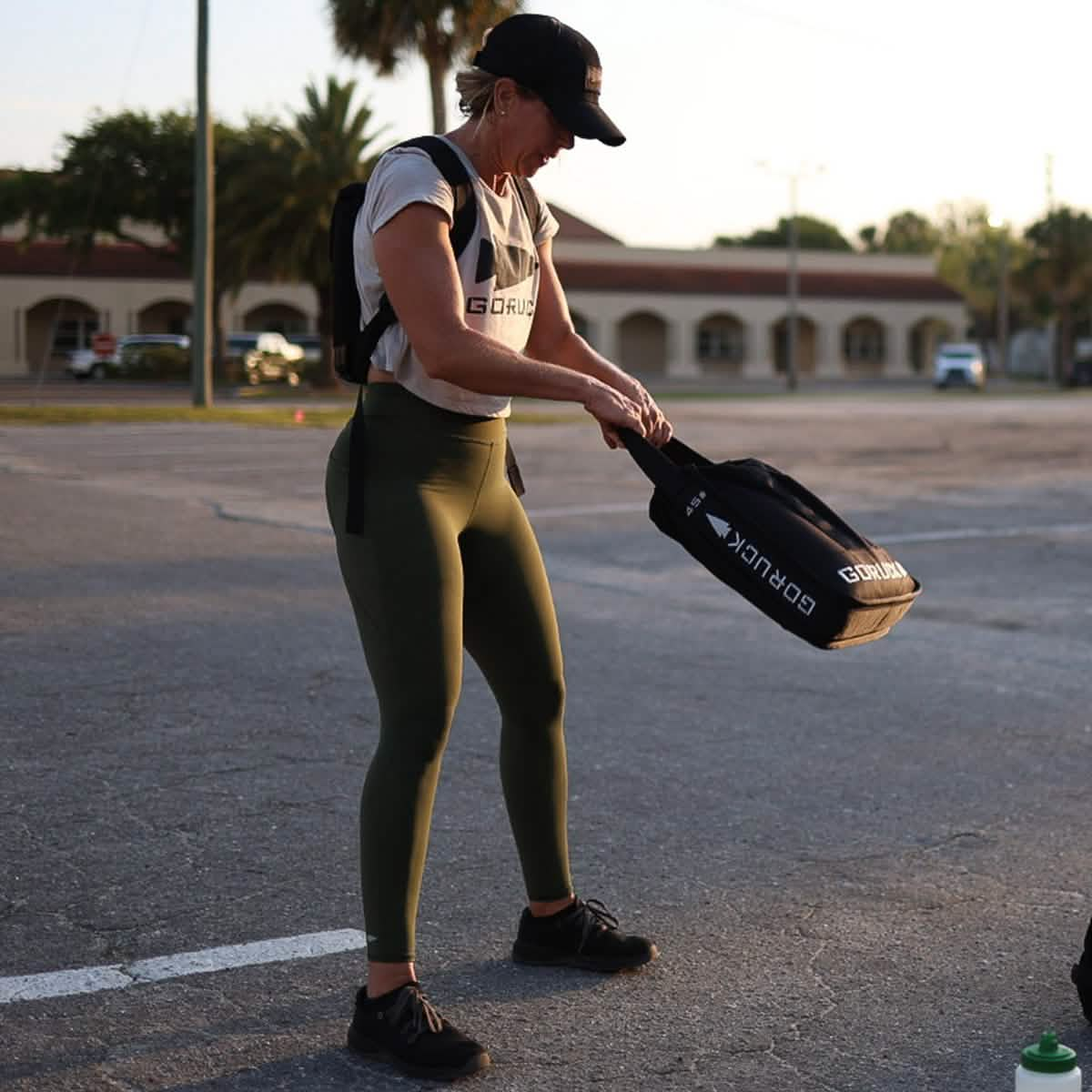Heartrate zones measure your effort during exercise based on your heartbeats per minute. If you want to improve endurance, burn fat, or increase fitness, you should be paying attention to your heartrate zones. Most smart watches, ellipticals, and treadmills display them, so you've probably seen them before.
The zones start at Zone 1, very light training. You reach Zone 1 when going for a light walk. The highest heartrate zone is Zone 5, which is the most effort you can give. If you've ever completed Murph, you might know the feeling of heartrate Zone 5.
Different heartrate zones have different purposes in fitness, weight loss, and endurance training. Zone 2 (light intensity) plays an important role in building endurance and burning fat. It's the heartrate zone where your body utilizes stored fat for energy, rather than more readily available carbohydrates.
Many athletes train in Zone 2 because it provides big endurance gains (AKA you get more fit) without the recovery time needed after a harder workout. In other words, Zone 2 training helps you avoid overtraining and injury while still improving your fitness.
Rucking in Zone 2 is our favorite way to train endurance and make sure we're staying healthy. That's what Zone 2 training is all about: steady progress toward our fitness goals. At GORUCK HQ, Zone 2 rucking is has kept us healthy and strong for years.
Examples of Zone 2 Cardio
Zone 2 cardio training comes in many different forms. Basically, though, anything that elevates your heartrate to 60-70% of your max effort is Zone 2 training. It's aerobic, so it's cardio that consumes oxygen to create energy. This makes your lungs and heart stronger and is what most people think of when they hear "cardio."
You'll notice this list doesn't include sprints, lifting weights, or HIIT. Those intense workouts elevate your heartrate higher than Zone 2, tax your body more, and require longer periods of recovery.
Zone 2 workouts are consistent efforts at a moderate pace. There is a cadence to them from beginning to end, not periods of intense effort followed by rest.
1. Jogging
Most of us will think of going for a run or jog when we think about a cardio workout. Fair enough. Jogging is an easy way to access heartrate Zone 2 (just make sure you're wearing supportive running shoes).
Jogging has a consistent cadence, isn't intense, and is an excellent way to train in Zone 2. If you're going for a run or jog and want to stay in Zone 2, just make sure you're able to carry a conversation. That's a good test to see if you're pushing too hard.
2. Cycling
Just like jogging and rucking, cycling has a cadence that can be sped up or slowed down to raise or lower your heartrate. A casual bike ride might keep you in Zone 1, but working up a bit of a sweat on a bike will push you into Zone 2. Just remember, Zone 2 training is all about maintaining a consistent pace, and that takes practice. A heartrate monitor can help you learn what your heartrate zones feel like.
Cycling is pretty accessible, but long bike rides are more comfortable and fun with the appropriate gear. You'll need some knowledge of bike maintenance, too, for flat tires and broken chains.
3. Swimming
If you're comfortable in the water, swimming laps at your local pool is a no-impact Zone 2 exercise. But this one probably requires the most skill of any Zone 2 cardio workouts. If you're not a good swimmer, your heartrate will be pretty high as you struggle through the pool.
4. Rowing
Row machines are great for Zone 2 training because you can adjust the pace to raise or lower your heartrate, and you're able to fall into a rhythm that keeps your effort consistent. But if you've never used a row machine, it can be pretty taxing on your arms and back muscles, which could push you out of Zone 2 (because you'll be working harder).
Row machines are in just about every gym, so they're pretty accessible.
5. Rucking
We think outdoor fitness is the best kind of fitness. When you combine sweat and sunshine (or rain), positivity chemicals flood your brain. That's one reason why we think rucking for Zone 2 training is ideal.
Rucking has a big advantage over the other examples of Zone 2 cardio: it makes you strong. Yes, rucking builds muscle. That's a big deal. Jogging, cycling, swimming, and rowing all incorporate various muscle groups, but none load you down and activate your shoulders, core, legs, and back quite like rucking. Rucking is a full body exercise that will keep you in Zone 2 and make your muscles sore (in a good way).
Rucking is also simple and accessible for everyone. All you need is a good rucksack and some weight. Or an old backpack and some bricks. Once you've got your rucking gear set up, there're no more expenses (except replacing your rucking boots). No flat tires and broken chains, no gym memberships, no sharing a pool lane at the YMCA. Just you, maybe some rucking friends, and the miles ahead.
Rucking is also low impact training, meaning it's easier on your joints than running. So you get the benefits of a Zone 2 workout without the potential aches and pains of running.
If you want an exercise regimen that's easy to stick with, torches calories, and makes you strong, look no further than rucking.
What is Zone 2 Rucking?
Zone 2 rucking is an endurance exercise that puts your heartrate at 60-70% of your max heartrate, walking at a consistent, conversational pace while you wear a weighted pack. Rucking in Zone 2 reaps the amazing benefits of rucking at a speed that your body can sustain for long periods of time. Zone 2 training ensures that your body isn't pushed into injury or burnout because the intensity stays low.
Low, slow, and healthy. That's a recipe for success, no matter your fitness goals.
Each heartrate zone has it's time and place, but many endurance programs recommend an 80/20 approach: 80% of your workouts should be at an easy pace, and 20% can be more intense. This helps you stay healthy while improving your fitness, burning calories, and getting strong.
While rucking in Zone 2, you'll develop and build your aerobic base. This means that your body gets better at moving oxygen to working muscles. Those muscles, in turn, get better at using that oxygen to create fuel. Additionally, exercising in Zone 2 encourages your body to use fat for fuel.
It's a lot of science.
Just know that Zone 2 training is aerobic training, meaning it increases your heartrate and oxygen consumption (unlike sprinting and lifting weights, which are anaerobic). When you add a rucksack to your Zone 2 training, though, you get many of the strength gains that are usually reserved for lifting weights.
Is walking Zone 2 cardio?
Can't you just walk? Why do you need to wear a rucksack?
Well, Zone 2 walking is actually hard to reach. Walking is often just not difficult enough to get you into Zone 2 and keep you there. If you want to stay in Zone 2 (that sweet spot for improving cardio fitness and burning fat), you'll need a more intense workout than just walking.
When you go for a walk, you're probably in heartrate Zone 1.
So we ruck our way into Zone 2.
That way we don't have to look down at our heartrate monitor so much. We know we're working harder when we're hauling a heavy load.
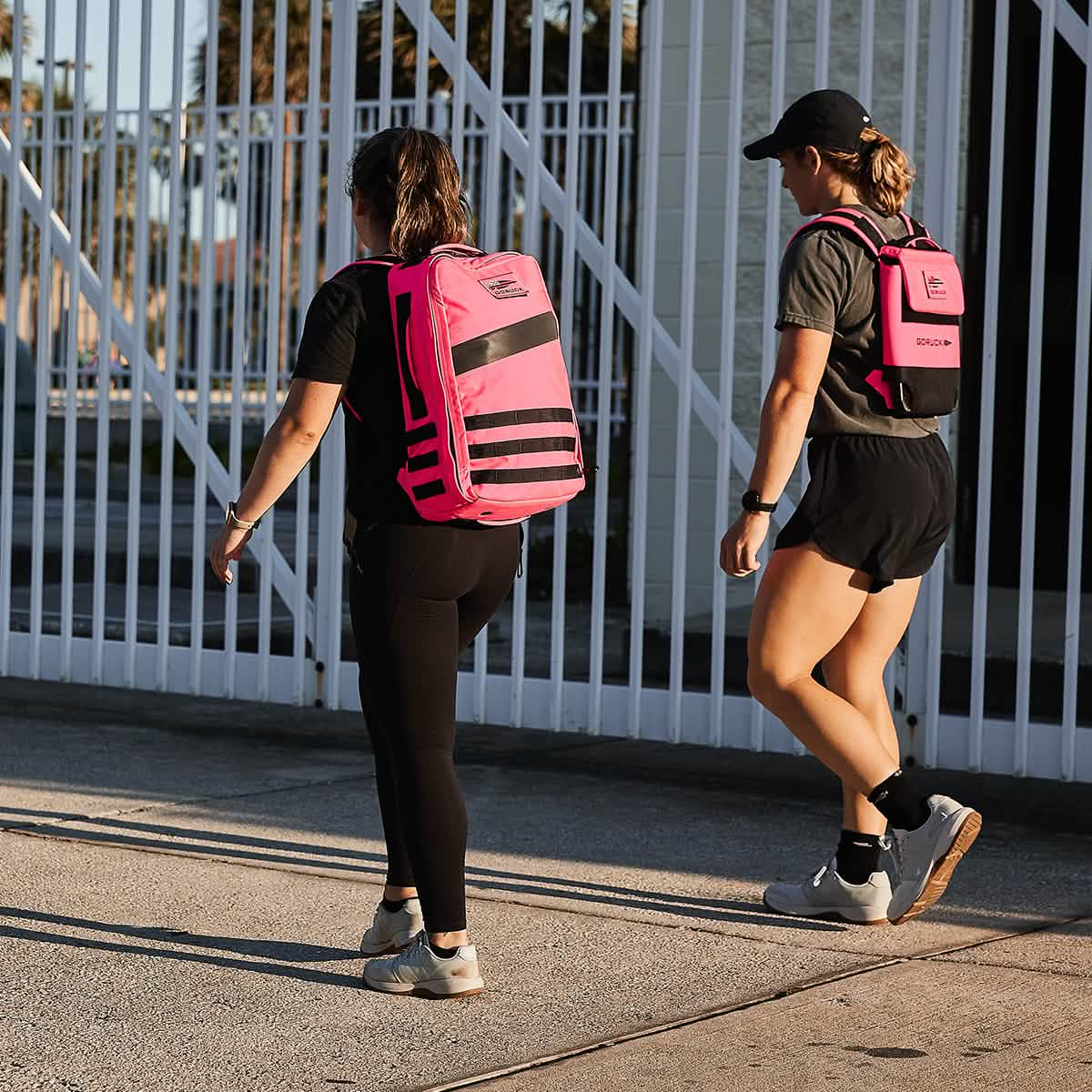
Who Should Ruck in Zone 2?
- Ruckers who are recovering from hard workouts. Not every workout should leave you completely wiped out. Zone 2 is ideal for recovering from workouts that take your body into higher heartrate zones because it increases circulation (without too much strain) and builds your aerobic base.
- New ruckers. If you're new to rucking, you probably haven't yet included tough rucking workouts in your routine. That's okay. You need to get used to carrying weight on your back, first. Spend most of your time in Zone 2 (a light, conversational pace) to give your muscles time to adjust to rucking.
- Ruckers training for endurance. If you're preparing for long endurance events (like the GORUCK Challenge), Zone 2 is where you should spend most of your time. It allows you to work longer to build your aerobic base, which needs to be strong during long endurance events. This is where endurance athletes earn their achievements: consistent, steady growth fueled by Zone 2 training.
- Anyone who wants to burn fat. Zone 2 is where your body uses reserved fat for energy. There's a lot of science behind this, but the bottom line is rucking is Zone 2 is a calorie torching, fat burning workout.
- Anyone who want to be strong. Rucking isn't easy. You'll use muscles you haven't used in awhile. If you want to be strong and functionally fit, you should spend some time rucking at a consistent pace, covering some miles. You can adjust weight, distance, time, and elevation to build the perfect workout.
- 75 Hard participants. If you're tackling 75 Hard (good on you), you'll need to do at least one 45 minute outdoor workout each day. Rucking is the perfect exercise for this challenge because you can get strong, improve your fitness, and stay ready for the next workout.
Rucking in Zones 3, 4, and 5
Working harder than Zone 2 has benefits too. Zone 2 is where your body works hard enough to get stronger, but not so hard that it's too beat up for the next session. In Zone 3 (moderate intensity), you might only be able to give 1 or 2 word responses, rather than Zone 2's conversational pace. More oxygen is consumed here and your body begins a lactate response, which is what we later call soreness. If you're rucking on hilly terrain, you're likely to hit Zone 3 on the uphill climbs.
Rucking in Zone 3 is a bit of a dead zone, depending on which expert you ask. While you're still reaping the general benefits of exercise, it's not the most efficient zone for training. You lose the endurance and aerobic base benefits of Zone 2, but you're not pushing hard enough to enter Zones 4 and 5, where you expand your ability to work hard. Our recommendation? Keep endurance and general fitness training in Zone 2. For your harder workouts, take it into Zones 4 and 5. Just don't overdo these higher intensity sessions.
Zones 4 and 5 are where we challenge our fitness levels and burn the most calories, though they're not sustainable for long periods of time. Using these higher zones in ruck training will make you a stronger athlete, but they must be a small portion of your training. Remember: fitness progress takes time, and Zone 2 is where the magic happens.
You might reach Zones 4 and 5 while sprinting, doing burpees, or carrying a heavy sandbag. These heart-pounding exercises have a place in every workout plan, but make sure you're comfortable wearing a rucksack before you add them to yours.
What are the Benefits of Heartrate Training?
The benefits of heartrate training are numerous. You don't need to be an elite athlete to include heartrate metrics in your workouts. Here are our five favorite benefits of heartrate training:
- Personalized workouts: by training within certain heartrate zones, you ensure your rucking workouts are neither too intense nor too easy for your fitness level. If you stack up too many back-to-back hard workouts (in Zones 3 and up), your body won't recover well, leading to burnout and injuries. Spend too many workouts in Zone 1, however, and you won't be improving your fitness.
- Improved endurance: in the lower heartrate zones, you're able to exercise longer and still recover. So your body won't be too beat up for your next session. That translates to more training with less stress, and your fitness compounds. Keep compounding Zone 2 workouts and your endurance will see massive gains.
- Body composition: you'll see Zone 2 called the "fat burning zone." This isn't clever marketing jargon. While rucking in Zone 2, with a consistent steady heartrate over distance, your body is encouraged to use fat reserves for energy.
- Resist overtraining: endurance workouts give us every opportunity to push too hard, but paying attention to your heartrate (and keeping yours in Zone 2) keeps you honest about how hard you're working. Do you need to step it up? Slow it down? Zone 2 is optimal for recovery and longevity, and gives ruckers a simple metric to follow.
- Track your performance: if you're a numbers guy or gal, watching your heartrate and speed over time can be exciting. You'll find overtime your heartrate (because you're working in Zone 2) stays the same, while your achievements stack up. For example, your first 3 mile ruck in Zone 2 might take 60 minutes. In just a few weeks, you'll see this time decrease. This is a simple way to track performance and see progress.
How to Ruck in Zone 2: Find Your Zone 2 Numbers
If you're new to rucking, you might start with our beginner's guide to help you get started. For ruckers who are experienced but want to reap the benefits of Zone 2 training, start with determining your heartrate zones...
- Determine your Zone 2 heartrate: the simplest method is to first subtract your age from 220, then take 60-70% of your heartrate. So if you're 40 years old, your maximum heartrate is 180 bpm (beats per minute). Therefore, Zone 2 is 108-126 bpm. This calculation is an estimate that serves its purpose: low impact, endurance-minded, healthy training. Some smart devices and watches can provide their own estimates, too. If you want the exact numbers, visit an endurance or running coach in your area for testing.
- Start rucking: rucking is more intense than walking (and burns 2-3X the calories), but less intense than running. During each of these exercises, you can estimate your Zone 2 range by maintaining a conversational pace. We don't all wear smart devices with built-in heartrate monitoring, after all. Keep your pace light enough that you can carry a conversation, but make sure you're breaking a sweat. That's our old school method for staying in Zone 2. Similarly, you can check your pulse for 60 seconds to find your average heartrate.
- Listen to your body, track your results: it requires a bit of patience to stay in Zone 2 during most of your training, but the results can be extraordinary. Listen to your body: toss in some tough exercises or pick up the pace when you want more calorie burn, or slow down if you feel your breathing and heartrate getting too taxed. You only need a simple notepad to track your progress. The weight of your rucksack and your time, distance, and perceived heartrate zone (conversational = Zone 2) provide great insights on how your fitness is improving.
- Find some friends to ruck with: the easiest way to maintain a conversational pace is to ruck with friends. You can join an official GORUCK Club and train for the GORUCK Challenge, giving the endurance you'll build in Zone 2 something to look forward to.
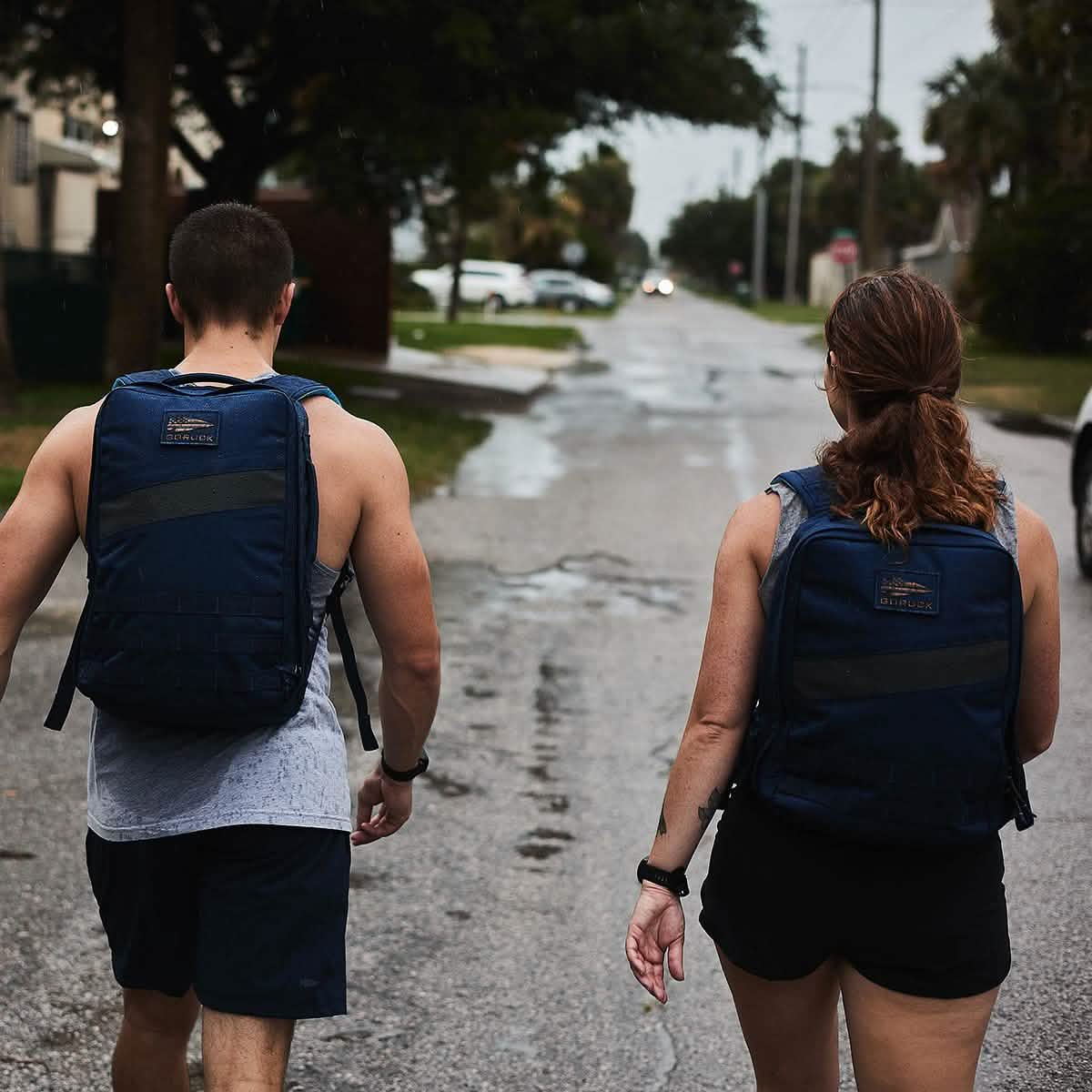
Zone 2 Rucking FAQs
Is rucking good for Zone 2?
Rucking is a great Zone 2 exercise because you reap all the strength and cardio benefits of walking with a weighted pack without taxing your body too much. In other words, rucking in Zone 2 keeps you healthy, builds muscle, and improves your cardio endurance.
Can you do Zone 2 training by walking?
Walking is not intense enough for most people to enter heartrate Zone 2.
You'll find it easier to elevate your heartrate to Zone 2 by wearing a weighted pack, AKA a "rucksack," while walking. Start with 10-20% of your bodyweight and a moderate pace, using a wearable device or a conversational pace to make sure you're staying in Zone 2.
How long should you exercise in Zone 2?
Most of your exercise should be in Zone 2. In fact, for endurance athletes, at least 80% of training should be in Zone 2. That applies to anyone taking on The GORUCK Challenge, running a marathon, or cycling long distances. For anyone training more moderately (or just getting started), start with 30-60 minutes of Zone 2 exercise two to three times per week. Increase your efforts by no more than 10% each week.
Can you train too much in Zone 2?
Yes, you can train too much in Zone 2. But since recovery from this moderate pace takes far less time than intense, hardcore workouts like Murph, you can train in Zone 2 daily. That doesn't mean you should pound pavement with a rucksack everyday, though. Always build up to repetitive daily workouts, increasing your total volume by no more than 10% each week.
If you're spending all your time in Zone 2, you should mix in some harder workouts that push your heartrate in Zones 4 and 5. Use these workouts intermittently to teach your body how to push into discomfort.
How should I feel in Zone 2?
While your heartrate is in Zone 2, your breathing should be under control and you should be able to maintain a conversation. That being said, it shouldn't be easy. You should break a sweat and be a bit strained.
What's Next? Rucking Is Versatile
Rucking is a versatile strength and cardio exercise. You might include sandbag workouts, grab a pair of Rough Runners™ and pick up the pace, or haul around your Sand Medicine Ball for a few miles. We've got all the tools, and we don't care how you get it done.
Just get it done.
That's what life is all about.
We'll spend most of our time in life's Zone 2, making steady consistent progress that keeps us healthy and always ready for what's coming next. But we're never afraid to take it up a notch, and we're always looking for the next challenge. Join us. Just pick up a rucksack and get moving.

